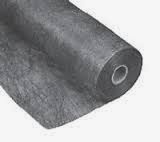When I was
younger, my parents liked to pack all of us kids up and go on family
vacations. It was something that I
enjoyed a lot and so I wanted to do the same with my kids when I grew up. My wife and I try to manage our money in a
way that we can at least do one vacation every year with our children. It builds strong bonds and creates great
memories-just like when I was younger, I just have so many fond memories of
time spent together on family vacations.
Sure, we didn’t always get along sitting in the car while we were
traveling and we had little disputes with each other, but those aren’t the
things that stick out in my mind.
Sometimes
there can be set backs on trips such as car trouble or bad weather, but one of
the things that I have found to be the worst is when one of us or our children
becomes sick. It seemed like one of our
kids in particular would almost always have a runny nose and complain that his
eyes were itching. We determined that he
had allergies and so we got some over the counter medicine to see if it would
help out. It did for a little bit, but
he still had a runny nose. We decided to
take him to our family doctor to see if there was a prescription medicine we
could give him or if there was anything else we could do to help him out. In addition to giving our son a prescription,
the doctor recommended that we get some sort of air purifying system for our
home or just even a room unit for our son’s room.
After
discussing it, we decided to get a whole house air purifier and it helped him
out a lot. We didn’t think about it at
the time since we were at home, but we soon found out that we would need to do
something for him while we were on our vacations. His medication worked during the day, but in
the mornings he would wake up with puffy eyes and dried up snot caked on his
face. We did some searching and we were
able to find a portable air purifier that we could take with us on our
vacations! I am so glad that we
did! The next time that we went on
vacation, we were able to take the unit with us and set it up in the hotel room
that we stayed in without any problem.
When
we got up the next day our son’s eyes looked normal and there was hardly any
snot on his face. He also told us that
he felt like he slept better and that it was easier to breathe. In the past he would sometimes wake up due to
the difficulty he experienced trying to breathe but the purifier seemed to make
a huge difference. It is also nice for
him to have when he goes to visit my wife’s parents who live a few hours away
from us. I highly recommend a portable
unit for anyone who has allergies and likes to travel!











